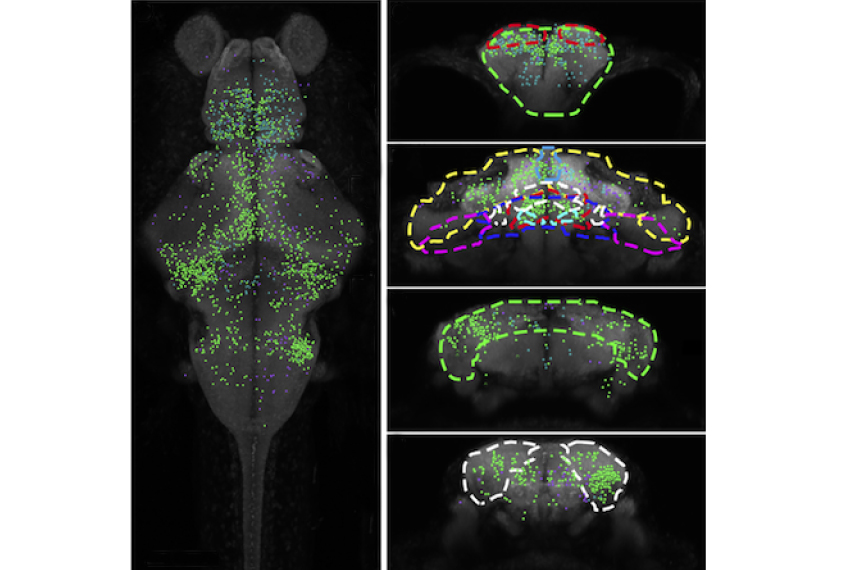Technique maps center of balance in zebrafish brains
A new method enables researchers to plot activity in the zebrafish brain’s system for spatial orientation and balance.
A new method enables researchers to plot activity in the zebrafish brain’s system for spatial orientation and balance1. The technique could provide insight into the brain’s vestibular system and the problems with balance and coordination that sometimes occur in people with autism.
About 80 percent of autistic people have movement or balance problems. But because the vestibular system in the inner ear responds to motion of the body, head or eyes, its activity is difficult to measure with classic techniques, which require the head to be still.
In the new work, researchers stimulate the vestibular system of zebrafish larvae by pointing a laser at the otoliths, a left-and-right pair of vestibular organs that sense gravity and linear motion. The laser applies pressure to the otolith, and the stationary larvae respond by rolling their eyes and moving their tails as if they have changed position.
The researchers detect the resulting neuronal activity by tagging receptors on the cells with fluorescent proteins. Fluorescence occurs only in the presence of light, so the researchers shine sheets of blue light on the brains of the transparent larvae. A microscope captures brain activity one layer at a time. In the study, the team combined 25 layers, each 10 micrometers thick, into a picture of the brain.

Movable microscope:
The researchers froze 13 larvae in agarose gel and removed the gel from around their tails. They stimulated each one with one-second laser pulses three times at five intensities. After constructing a picture of each brain, they combined all 13 images into one map, which appeared in December in Current Biology.
The map shows three types of neuronal responses to the otolith pressure: small, large and muted. These responses show up to different degrees in 10 brain regions.
The researchers plan to create zebrafish models of autism and the related condition fragile X syndrome, and use their method to better understand how those conditions alter the vestibular system.
In related work, another team developed a microscope that can capture images of moving zebrafish larvae2. The zebrafish sit on a rocking platform, which stimulates the vestibular system without requiring a laser. The microscope, also on the platform, moves in tandem and so is stationary relative to the fish, the team reported in the same issue of Current Biology.
References:
Recommended reading

Documenting decades of autism prevalence; and more

Expediting clinical trials for profound autism: Q&A with Matthew State
Explore more from The Transmitter

‘Perturb and record’ optogenetics probe aims precision spotlight at brain structures


